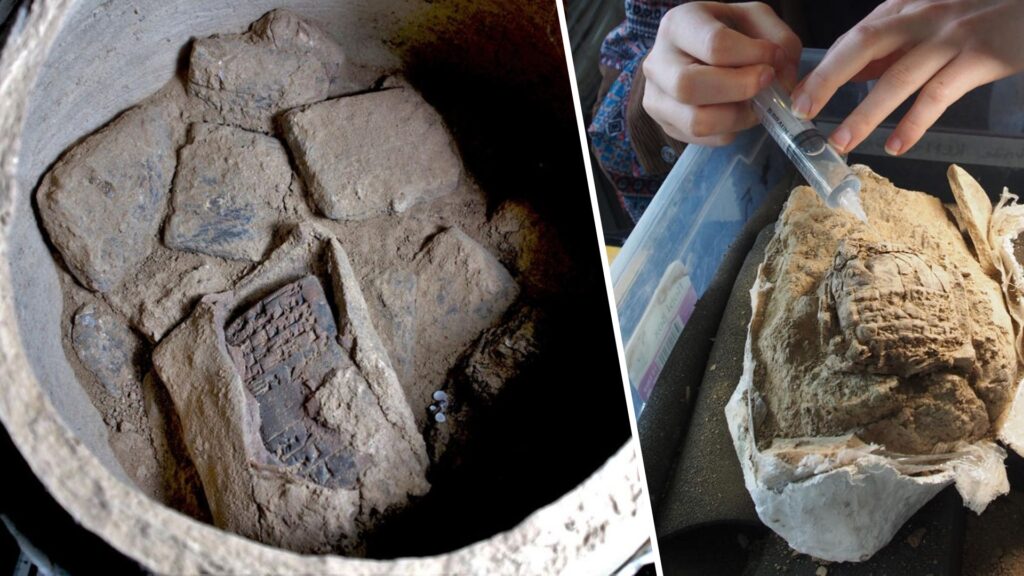Due to a drought in southern Iraq, a water reserve was temporarily emptied to irrigate agricultural crops. For archaeologists, it was a unique opportunity to study a normally submerged ancient city.
Due to a drought caused by climate change, a long-sunk former city now finds itself on dry land in Iraq. It was an unprecedented opportunity to study it, as reported by the University of Tuningen on May 30, 2022, recounting excavations carried out in collaboration with the University of Freiburg and the Kurdistan Archeology Organization.
In question, the extreme drought that the south of the country has been experiencing for several months. This poses a problem for agricultural crops, which must at all costs be prevented from withering. To do this, water has been taken – since December 2021 – from the largest natural water reserve in the country, that of Mosul. As the reservoir was emptied, a mysterious town gradually reappeared.
Submerged several decades ago without ever having been studied, this ancient city dates from the Bronze Age. It was inhabited during the Antiquity of the Near East, more than 3,000 years ago.
In Iraq, the city of Zakhiku
If the archaeological site is now called Kemune, it could actually correspond to the ancient city of Zakhiku. It was a high place of the kingdom of Mittani. Covering a good part of Upper Mesopotamia, the Mittani then cohabited with the Egyptians and the Hittites. The place has been very little studied because of its submersion. The sudden drying up of the reservoir triggered an archaeological excavation mission to ” excavate and document » the city as much as possible before it is submerged again. The shooting window was tight.
Archaeologists managed, in just a few days, to map most of the city. They found the central palace, which was already known, and new buildings never spotted before: a massive fortification with a wall and towers, a monumental storage building with several floors, as well as a set of buildings forming an industrial complex. .
The walls climbing several meters are in a state of conservation described as ” amazing by archaeologists. However, they are made of bricks of mud dried while having been engulfed by the waters: there should not be much left. The explanation is to be found in 1350 BC. Around this date, the city was destroyed by an earthquake. The buildings were buried… and therefore protected.

Now that the buildings have been excavated, the teams have placed large, airtight plastic sheets, covered with a gravel backfill, to preserve the ruins from the next submergence. And on this date, precisely, the site is again under water in its entirety.
What the city could teach us about Mittani
Among the finds, the famous multi-storey storage building is decisive for the archaeological understanding of the city of Zakhiku. ” The huge storage building is of particular significance, as huge amounts of goods must have been stored there, probably brought from all over the region writes Ivana Puljiz, who participated in these excavations. This confirms the central importance of this city in the kingdom of Mittani.

During the excavations, the archaeologists also discovered five ceramic containers containing a hundred tablets with cuneiform writing (an ancient Near Eastern written communication system). A good part of these archives are still in their clay envelopes. ” It’s almost a miracle that cuneiform tablets made of unfired clay have survived so many decades under water. », Rejoices one of the archaeologists, Peter Pfälzner, on the university website.
Among these tablets, we find in particular letters, the decoding of which will make it possible to better understand the role of the city as well as its fall – when the kingdom of Assyria extended its domination to this region.
